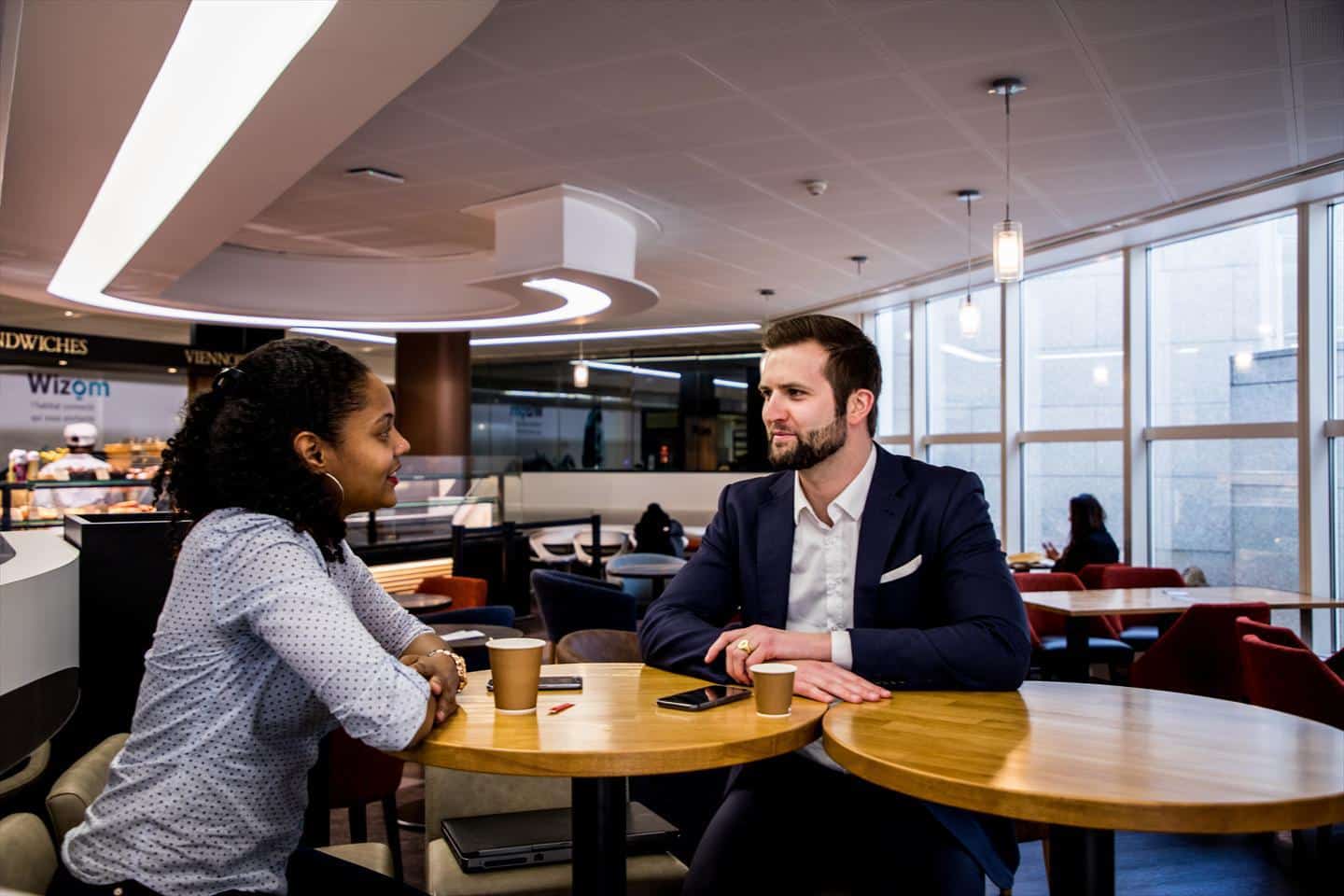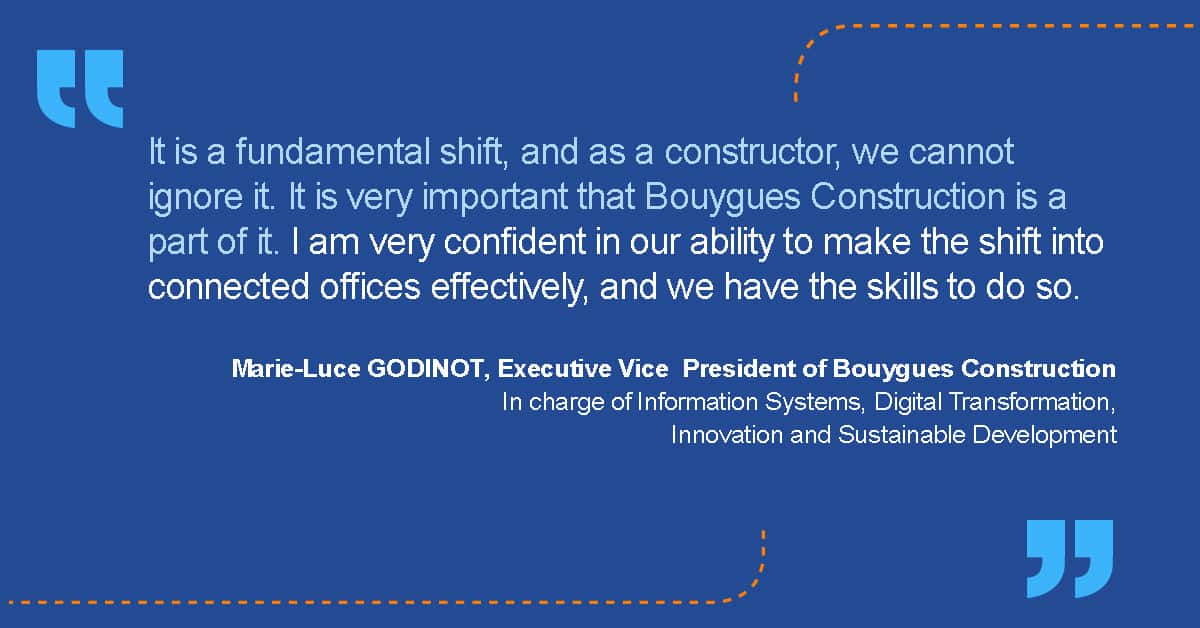
Focus on connected offices
3 minutes of reading
Digitalisation is having an impact on all those who use our buildings. The real estate sector, which includes planning, major construction companies, marketing and services must adapt.

This morning, you arrived at the office but had forgotten your badge. You are connected to an application which manages offices from a smartphone, and you are allowed access. You have organised a meeting at the last minute. The app uses geolocation to find where you are in the building and your smartphone shows you the nearest free meeting room. Once you have booked it using your device, the room ‘recognises’ you and the room environment can be automatically altered to suit your requirements, e.g. orange-coloured lighting and relaxing music. Sensors can also be used to regulate the temperature as you wish without you having to do anything. Once you have switched to ‘presentation’ mode, the blinds are lowered, the lighting and music stops, the screen unrolls and the overhead projector lights up, all with just one click. At the end of your meeting, the lights automatically switch off thanks to the motion detector in the room and you leave to enjoy a coffee. You have also been able to report a failure with the ventilation system and have sent a request for it to be repaired using the application (the maintainer will then also use the application to quickly access a plan of the network) before you look for a ‘flex’ office space available on your floor, all with the aid of your smartphone.

The stuff of science fiction surely?
Absolutely not. This technology, which makes an office ‘smart’ and connected is already being used by teams at Bouygues Construction! Several key players within the Group have now developed solutions for smart buildings. One example is C2S, the Bouygues Group’s digital transformation subsidiary and a consultancy specialist, particularly in the tertiary sector. There is also Axione, a solution integrator for making buildings intelligent and which equipped the Alto Tower in particular.The time of the smart building
But what is a connected office in reality? Put simply, it is a building which adapts to the needs of its occupants – and not the other way round! The technology is already here, and now all that remains is to take advantage of it: sensors to collect data, software to interpret it, applications to automatically regulate the atmosphere desired and to allow the user to interact with the building and its facilities and to alter these according to their needs at the time. This technology not only helps the occupant, but is also useful to managers and maintainers. They will see many benefits for the operation of the building as a result. The data collected allows the performance of Facility Management to be measured via the collection of data about incidents and resolution times. Predictive maintenance is also one of the indirect benefits. The real rate of use of areas and services is also collected, and their level of availability can be estimated in real time. Finally, management of energy consumption is improved, with the measurement of real costs and the inclusion of the building within microgrids. Building occupants and maintainers are the winners…but that is not all! By extension, our direct clients (lessors, developers and investors) are also interested in the possibilities. A connected property is able to evolve over the long term and adapt to future trends and their own customers’ expectations This guarantees the longevity of our clients’ assets. One million connected properties were constructed between 2014 and 2018 (Gilles Cordon, ‘Les transformations digitales de l’immobilier d’entreprise’). This rapidly expanding market is what led the Connected Building R&D department at Bouygues Construction to improve the quality of life while at work for all those in the offices which we build, to facilitate the provision of services for maintenance and above all to ensure that all these features are very easily accessible on a smartphone or a single application. It is highly probable that digital will become a standard in the future for buildings, much like the HQE (High Quality Environmental standard). Bouygues Construction could be central to the eco-system. ‘Our role is not to provide new technology as that is not our core activity’, points out Marie-Luce Godinot. ‘However, we should place ourselves in an advisory position. We are a provider of solutions’.
More reading
Read also




What lies ahead? 7 megatrends and their influence on construction, real estate and urban development
Article
20 minutes of reading

